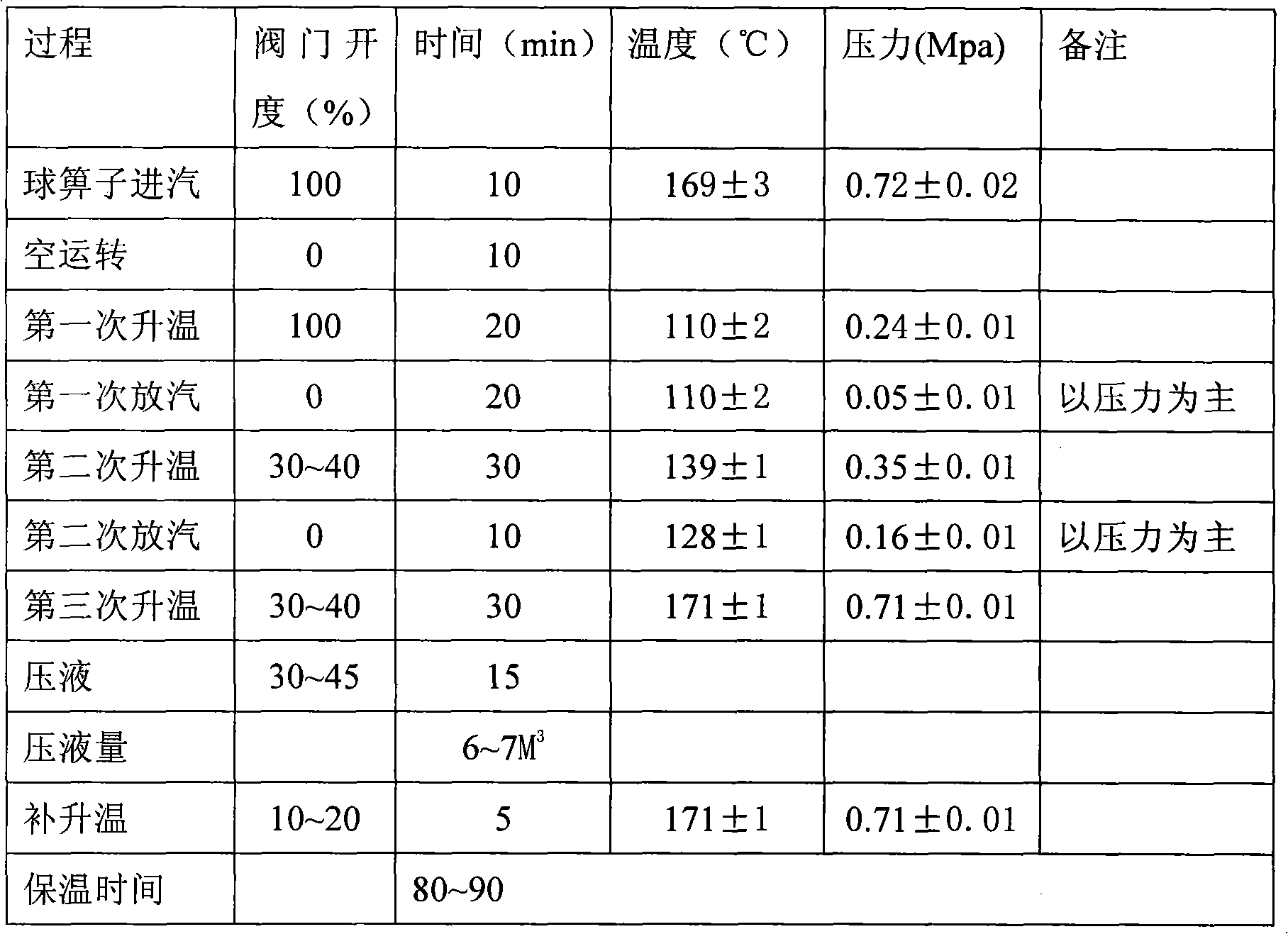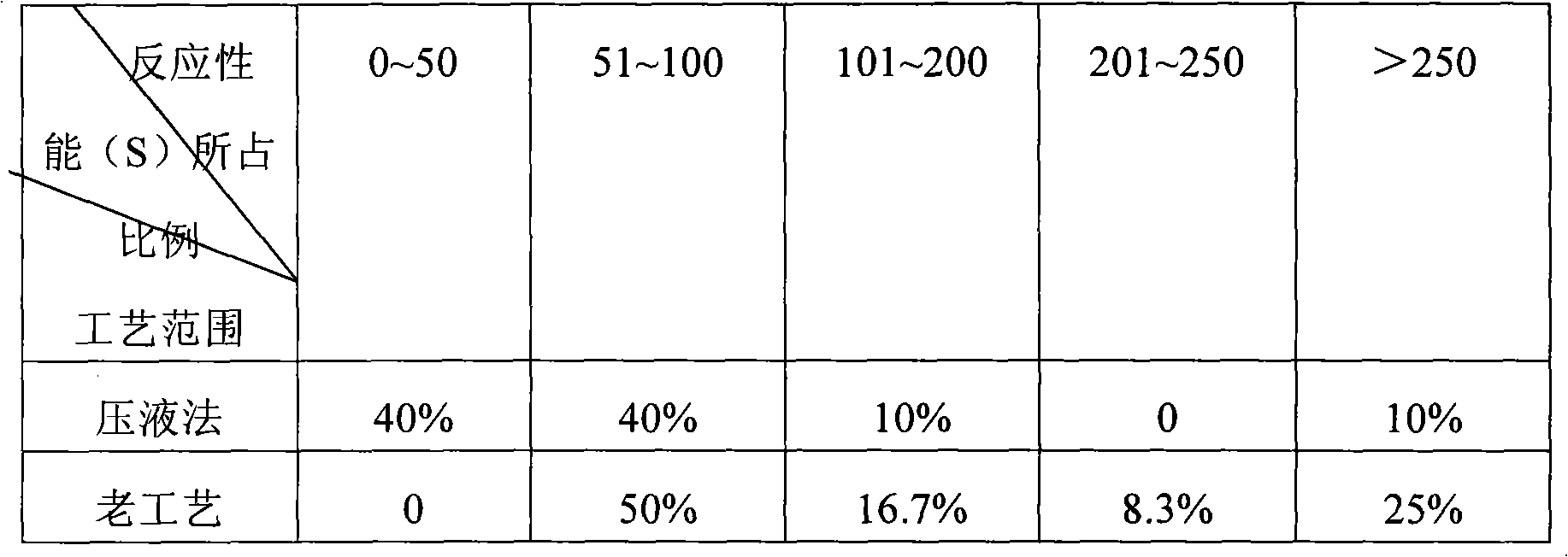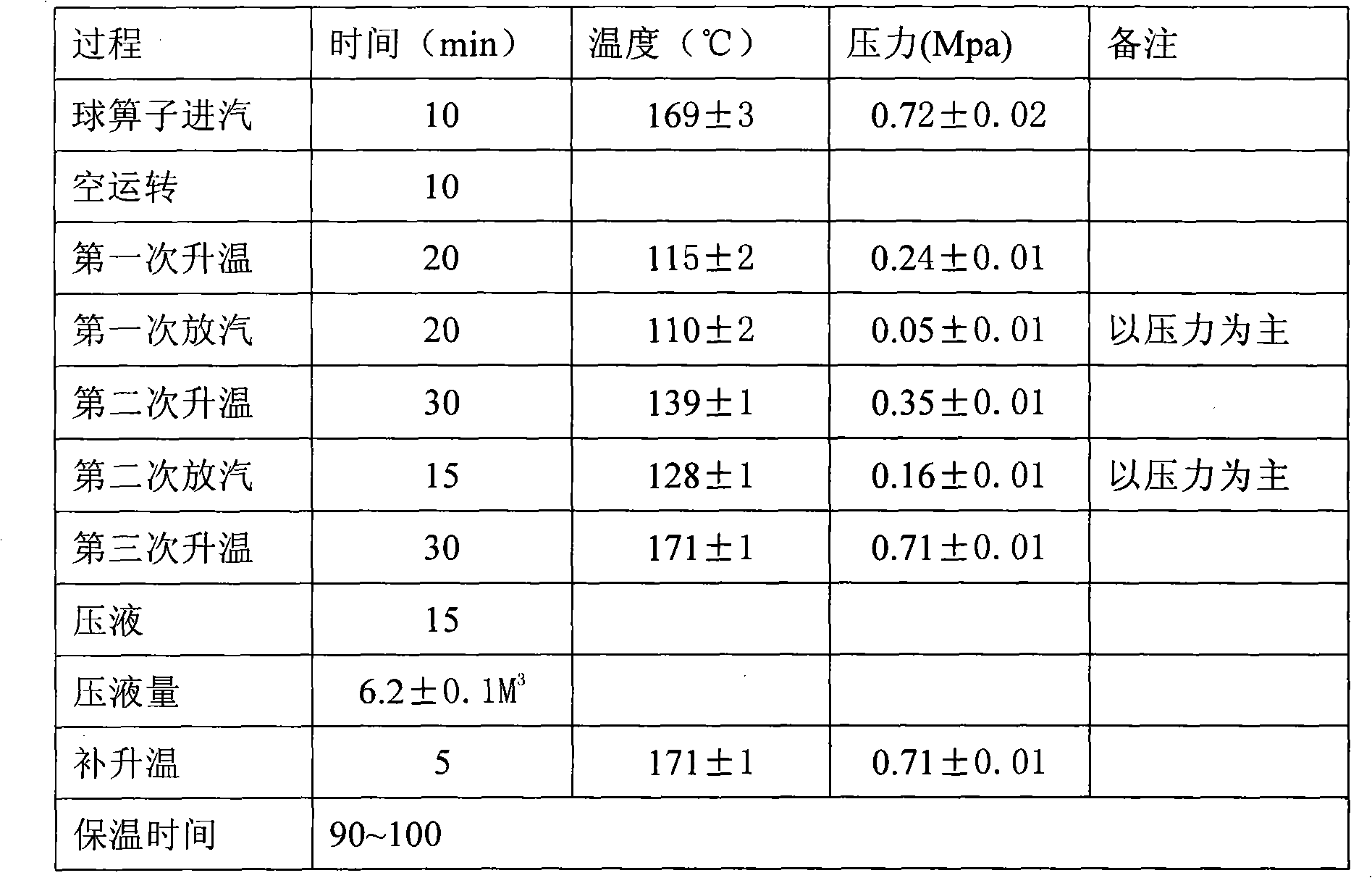Pulp boiling technique with liquid pressing mode
A pulp and process technology, which is applied in the field of hydraulic pulp cooking technology, can solve the problems of inability to conduct heat and radiation, small friction coefficient, and heat transfer of materials in the ball, so as to improve the reaction performance, increase the gas phase space, and improve the The effect of uniformity
- Summary
- Abstract
- Description
- Claims
- Application Information
AI Technical Summary
Problems solved by technology
Method used
Image
Examples
Embodiment 1
[0024] Example 1: Experimental protocol for cotton pulp production:
[0025] 1. Large-scale production and small experiments:
[0026] Table 1: Small test process of pressure liquid cooking
[0027]
[0028] According to this process, 57 batches of small-scale tests were carried out continuously, and the resulting corresponding finished products were 10 batches in total. The obtained pulp products were 247.16 tons, of which the first-class product was 223.53 tons, and the first-class product rate was 90.5%, and the second-class product was 23.63 tons, accounting for 9.5%. %. The reaction performance of the products produced by the traditional process and the products produced by the hydrohydraulic process is compared as follows, see Table 2:
[0029] Table 2: Comparison table of the reaction performance of the finished pulp products by the hydraulic pressure method and the old technology in March 2007
[0030]
[0031] It can be seen from Table 2 that the reaction per...
PUM
 Login to View More
Login to View More Abstract
Description
Claims
Application Information
 Login to View More
Login to View More - R&D
- Intellectual Property
- Life Sciences
- Materials
- Tech Scout
- Unparalleled Data Quality
- Higher Quality Content
- 60% Fewer Hallucinations
Browse by: Latest US Patents, China's latest patents, Technical Efficacy Thesaurus, Application Domain, Technology Topic, Popular Technical Reports.
© 2025 PatSnap. All rights reserved.Legal|Privacy policy|Modern Slavery Act Transparency Statement|Sitemap|About US| Contact US: help@patsnap.com



